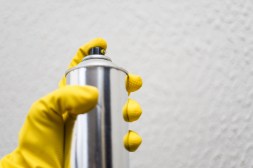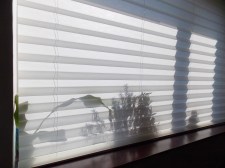Dry Brushing vs Other Exfoliation Methods: Which is Best for Your Skin?
Exfoliating your skin regularly is an essential step in any skincare routine. It helps remove dead skin cells, unclogs pores, and promotes a brighter complexion. With so many exfoliation methods available, it can be challenging to determine which one is best for your skin. One popular technique that has gained traction in recent years is dry brushing. In this article, we will compare dry brushing with other exfoliation methods to help you decide which one suits your skin best.
Dry Brushing: What is it and How Does it Work?
Dry brushing involves using a natural bristle brush to gently scrub the skin in circular motions before showering or bathing. This method stimulates blood circulation and lymphatic drainage while sloughing off dead skin cells.

One of the primary benefits of dry brushing is its ability to improve lymphatic flow. The lymphatic system plays a crucial role in removing waste and toxins from the body. By stimulating this system through dry brushing, you can help detoxify your skin and reduce inflammation.
Chemical Exfoliation: A Gentle Approach
Chemical exfoliation involves using products that contain acids such as alpha-hydroxy acids (AHAs) or beta-hydroxy acids (BHAs) to remove dead skin cells and promote cell turnover.
This method offers a more gentle approach compared to physical exfoliation techniques like dry brushing or scrubs. AHAs work on the surface of the skin, helping to dissolve the bonds between dead skin cells, while BHAs penetrate deeper into the pores, making them effective for oily or acne-prone skin.
Mechanical Exfoliation: Scrubs and Tools
Mechanical exfoliation refers to physically scrubbing the skin using abrasive substances like scrubs or tools such as facial brushes or cleansing devices.
Scrubs typically contain granules that physically buff away dead skin cells. While they can be effective, they may also cause irritation for those with sensitive or easily irritated skin.
Facial brushes and cleansing devices provide a deeper exfoliation by using rotating or vibrating bristles to remove dead skin cells. They can be a good option for those with thicker skin who need more intense exfoliation.
Microdermabrasion: Professional Treatment for a Deep Clean
Microdermabrasion is a non-invasive professional treatment that uses fine crystals or a diamond-tipped wand to gently exfoliate the surface of the skin. This procedure effectively removes dead skin cells and stimulates collagen production, resulting in smoother and more radiant skin.
Microdermabrasion is ideal for individuals seeking a more intensive exfoliation treatment or those with specific concerns such as acne scars, hyperpigmentation, or fine lines and wrinkles. However, it may not be suitable for everyone, especially those with sensitive or inflamed skin.
In conclusion, when it comes to choosing an exfoliation method that suits your skin best, it’s important to consider your specific needs and preferences. Dry brushing offers the benefits of lymphatic stimulation and detoxification while being gentle enough for most skin types. Chemical exfoliation provides a milder alternative that can be tailored to different skincare concerns. Mechanical exfoliation methods like scrubs and tools offer versatility but may cause irritation in some individuals. Lastly, microdermabrasion is an effective professional treatment for deep exfoliation but may not be suitable for everyone. Experimenting with different techniques will help you find the best method suited to your unique skincare needs.
This text was generated using a large language model, and select text has been reviewed and moderated for purposes such as readability.


